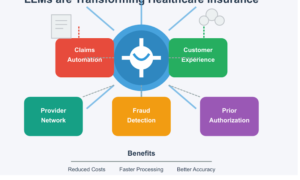The average cost of buying a new automobile soared to almost $40,000 in 2020 and the cost of owning one topped $9000 per year. While used car buyers may spend less, they’re still shelling out plenty of cash: the average price of a used car was over $21,000. Used car prices spiked in response to the COVID-19 economic crisis, which left a record number of Americans unemployed and the remainder uneasy and steering clear of new car expenses. Either way, car owners are looking to save money wherever they can. And financial technology companies in three sectors—auto insurance, auto financing, and its best friend, credit repair—are lending a hand.
Background: Growth of the Fintech Industry
A cooperative study performed by the World Bank and the Cambridge Centre for Alternative Finance found that many financial technology firms aren’t just surviving, but thriving in the COVID-19 economy. In some parts of the world, fintech companies experienced jaw-dropping growth rates of up to 40% in the first half of 2020. Consumer lifestyle changes brought on by the pandemic—the fact that we’re staying home more and increasingly unwilling to visit businesses in person—are contributing to the industry’s growth. But the growth has been steady for some years. Case in point: The share of venture capital going to fintech startups over the past decade has increased by 60%. Since 2015, the amount has doubled and reached a high of $43 billion in 2019. In 2020, the number of fintech startups topped 10,000 in the Americas alone. Consumers continue to clamor for more ways to live their lives online and accessing financial services digitally is one thing they’ve increasingly demanded.
Fintech’s Influence on the Auto Financing Experience
Auto shoppers no longer have to listen to long-winded, in-person sales pitches. For years they’ve been able to research car features online at all auto manufacturers’ websites, complete with 360˚ virtual vehicle tours. They’re able to narrow down their purchase choices without leaving home to the point that they need only take a few test drives to decide on a new ride.
But financing their purchases has been another story. Comparing auto loan rates and applying for financing has historically been a wearisome process. Many consumers experienced the frustration of being turned down for a loan, only to have to start all over again. And their credit scores took a hit each time a new lender made a hard credit inquiry.
Enter fintech to take the time and hassle out of finding a loan. Auto loan marketplace sites allow car buyers to compare the rates, terms, and qualification factors associated with multiple loans with just a few keystrokes. Some provide credit tools that help borrowers figure out where they stand on certain credit qualifications. These sites return detailed loan quotes within a matter of seconds. Most can do so without doing a hard credit pull and adversely affecting a car buyer’s credit. Auto loan marketplaces also centralize and streamline the loan application process, delivering an up or down decision to consumers more quickly. When it comes to speed, fintech-powered lending leaves traditional auto financing in the dust.
Simplifying Auto Insurance
Auto insurance represents one of the greatest annual expenses of owning a car. New car owners who never even leave their driveways are still looking at an average insurance bill of over $2000. For many, shopping for the best auto insurance means shopping for the best price. Layer on the complexity of deciding on coverage and consumers are once again looking for a simple solution to purchasing auto insurance.
Forbes Magazine added the insurance category to its top 50 list of fintech companies, noting that investors poured $4.4 billion into insurance technology companies in 2020. These companies are replacing live agents and phone calls with a fully digital experience that allows car buyers to compare plans and pricing and purchase a policy in minutes. Industry analysts advise that auto insurance companies that don’t embrace new fintech solutions will be left behind. They’ll lose out on the operations efficiencies offered by new technology and alienate the growing percentage of insurance customers who demand the speed and simplicity of an online buying experience. From grocery shopping to banking, mobile access is another key feature customers are demanding. It’s no surprise they’re insisting insurers deliver it, too. The best-known insurance brands now offer proprietary apps that allow customers to purchase and manage their policies more conveniently. And mirroring the auto finance industry, auto insurance is frequently purchased on insurance marketplaces. Brand loyalty is declining as an insurance purchase motivator. Customers are looking for the best deal, plain and simple. Insurance marketplaces generally offer instant quotes from multiple insurers and make finding a great deal a painless process.
Fintech Fueling the Credit Repair Industry
Both auto finance and insurance companies take customers’ credit profiles into account when deciding what kind of deals they want to offer. The best interest rates and terms and policy deals are reserved for customers with stellar credit profiles. Nowadays, consumers are recognizing the advantage of maintaining a high credit score and in 2020, the average credit score in the US rose to 710 points. The credit repair industry, powered by fintech, is helping consumers address their credit problems. Credit repair is a long, tedious road that many consumers are loath to take on their own. Using artificial intelligence, credit repair companies deliver reliable results and lift a significant burden for consumers who want to reap the financial benefits of having good credit.
What’s Next?
From investment management to real estate to cryptocurrency trading, the fintech frontier is vast and expanding all the time. Check back with Techbullion frequently for new product news and trend reporting. Stay informed on an industry that’s already transformed business and insight you can use to make better business decisions.

































